Chief Islander reports on Tristan's Marine Protection Zone
Report and photos from Tristan da Cunha Chief Islander and Director of Fisheries James Glass
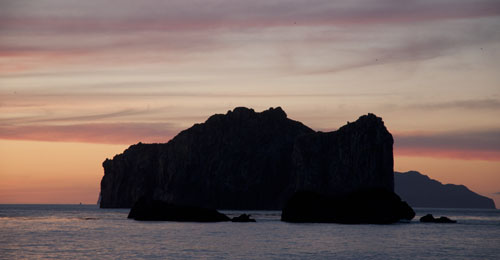
View of Stoltenhoff Island with part of Inaccessible Island visible behind, right.
Chief Islander James Glass
|
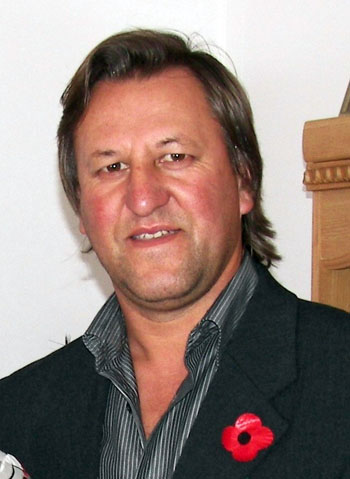 |
| Chief Islander James Glass |
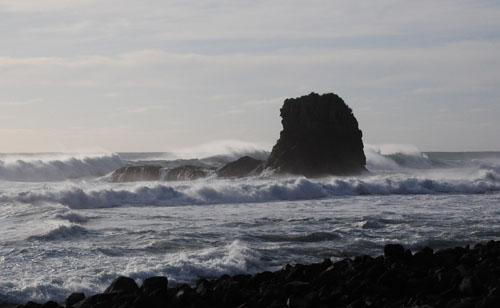
Wild coast of Tristan: Showing a Seastack, known as a Hardie on the island.
Today we're delighted to announce our Marine Protection Zone, 25 years after declaring Gough Island within our archipelago a UNESCO World Heritage Site. The Tristan da Cunha MPZ is the fourth largest fully-protected marine reserve on the planet, and the biggest in the Atlantic.
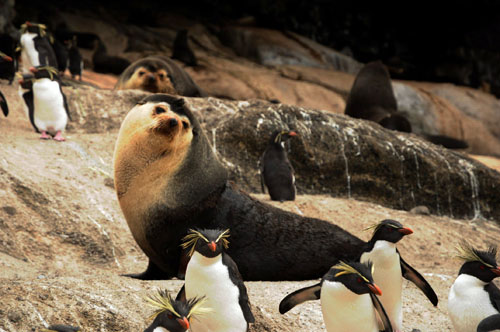
Subantarctic fur seals and Northern rockhopper penguins on Nightingale Island
As well as the World Heritage Site, which is now extended to Inaccessible Island, our chain of four tiny islands holds many unique species. The Spectacled Petrel is endemic to Inaccessible, breeding nowhere else on earth. 80% of the world's population of Subantarctic Fur Seals breed in our archipelago, as do more than 90% of the world's population of Northern Rockhopper Penguins. Southern Right Whales and their calves can be spotted, as well as the rarely seen Shepherd's Beaked Whale. Tristan's waters are rich in history, and house the MSC-certified fishery for Tristan rock lobster (Jasus tristani) on which the local economy depends. Thanks to this sustainable fishery the community is largely self-supporting: lobster provides over 80% of the island's income and our way of life relies on it.
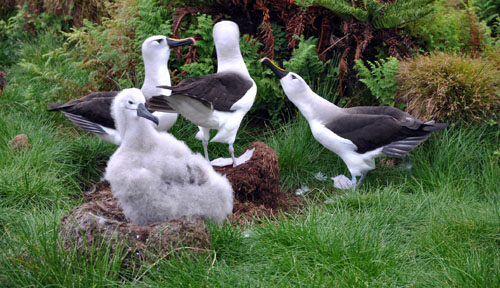
Atlantic yellow-nosed albatross on Nightngale Island
The Tristan community have supported the MPZ, just as they supported the earlier commitment to conservation of more than 50% of their land area. Stewardship of a precious environment is the reason we're protecting 90% of our waters: we're proud that we can play a key role in preserving the health of the oceans.
However, Tristan is not a prosperous island and it should be noted that these decisions will have an economic impact. For example, while I recognise that banning bottom trawling will be good for stock management and the health of the ocean floor, it also leads to the loss of much needed revenue. Tristan also relies on fishing ventures to boost traffic to and from the island, as by law each ship can only carry 12 passengers either way, currently for just eight trips a year. Every voyage is part-subsidised by fishing activity, so curbs on fishing mean curbs on our link with the outside world.
The current average salary on Tristan is roughly £275 a month (after taxes and pension). Imported goods in the world's remotest community can cost 75% - 95% more than they would in South Africa or the UK. Whilst islanders welcome the MPZ and want to play their part for the environment, they are struggling to keep up with inflation, let alone to improve their modest standard of living.
Any loss of fishing revenue to the island also means a loss to Tristan's public finances, with less to spend on infrastructure, education, healthcare and other vital services. So we welcome the support we have received via donors, with help from the RSPB. Hopefully this and other projects deriving from implementing our MPZ will mitigate some of the loss and we're grateful to all the donor organisations.
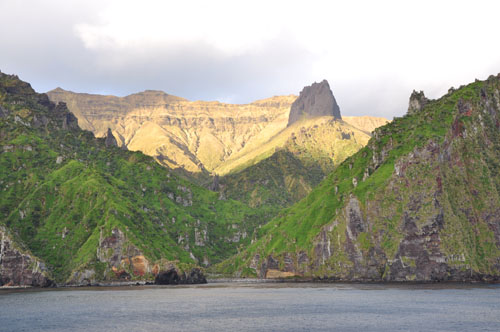
Gough Island showing The Glen valley in the middle foreground where the Gough Island Scientific Survey set up their base in 1955 and which was the site of the South Africa Government Metereological Station from 1956-1963.
Gough Island was created a World Heritage Site in 1995 and Inaccessible Island was added in 2004.
With this announcement, the Blue Belt moves into unique territory. Tristan da Cunha is the first participant to come to the project with both a permanent population and an existing commercial fishery. It's not the same as South Georgia, Ascension or Pitcairn. The very foundation of the Tristan economy, and thus the livelihood and wellbeing of the islanders, is the commercial fishery for Tristan rock lobster and whitefish. This will continue alongside the MPZ.
We will continue to work with the Blue Belt teams at the Marine Management Organisation and the Centre for Environment, Fisheries and Aquaculture Science to update the necessary legislation and management plans to manage our MPZ. I would also like to thank the British Antarctic Survey, the RSPB, the Darwin Plus scheme, and fishing companies Ovenstone Agencies (in Tristan) and Argos (in the Falkland Islands) for their contribution to the data collection which has made possible this momentous development.
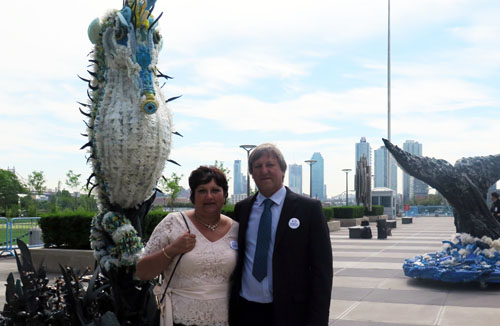
James and his wife Felicity in New York on World Oceans Day on 8th June 2017
In 2017 my wife and I had the privilege to be guests at the United Nations in New York, where my grandson Kieran Glass represented the island and the wider UK family before the General Assembly. Kieran was among children from UNESCO's marine World Heritage Sites who pledged to world leaders that they would protect their ocean environments. I am proud that we are honouring his pledge.
In the future I hope these protections will help improve Tristan's marine environment to deal with the impact of climate change, which should help safeguard the species which live here, and the people who depend on them.
James Glass
Chief Islander - Tristan da Cunha
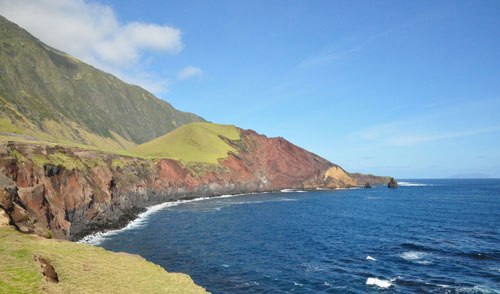
View looking west from the Tristan da Cunha Settlement Plain
showing Hillpiece and, in the far distance the outline of Inaccessible Island,
which, together with Gough Island forms a World Heritage Site.
